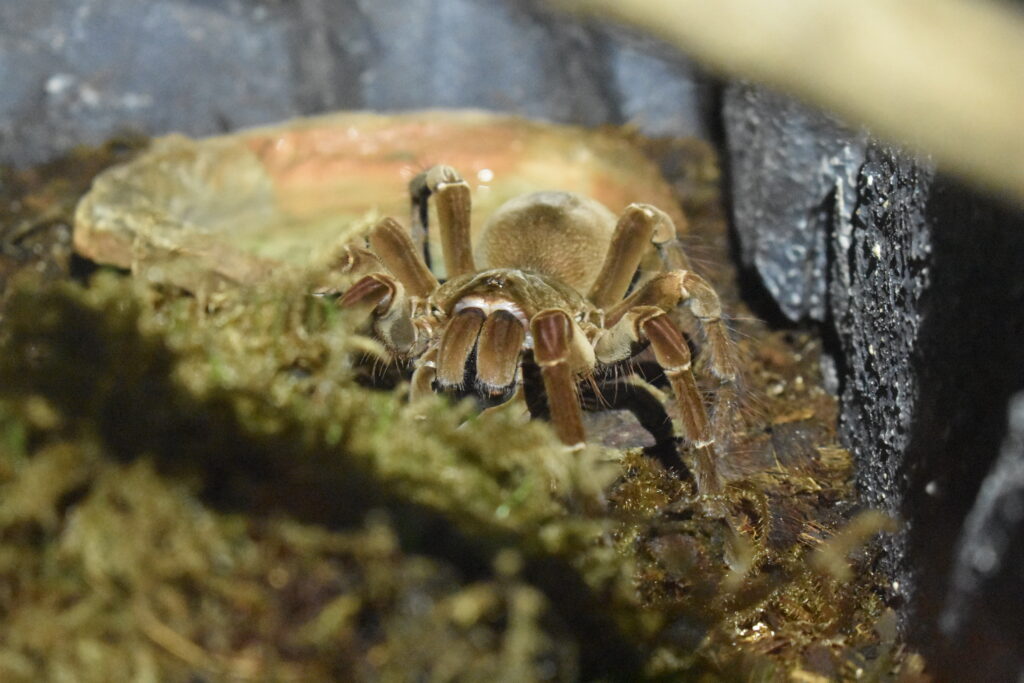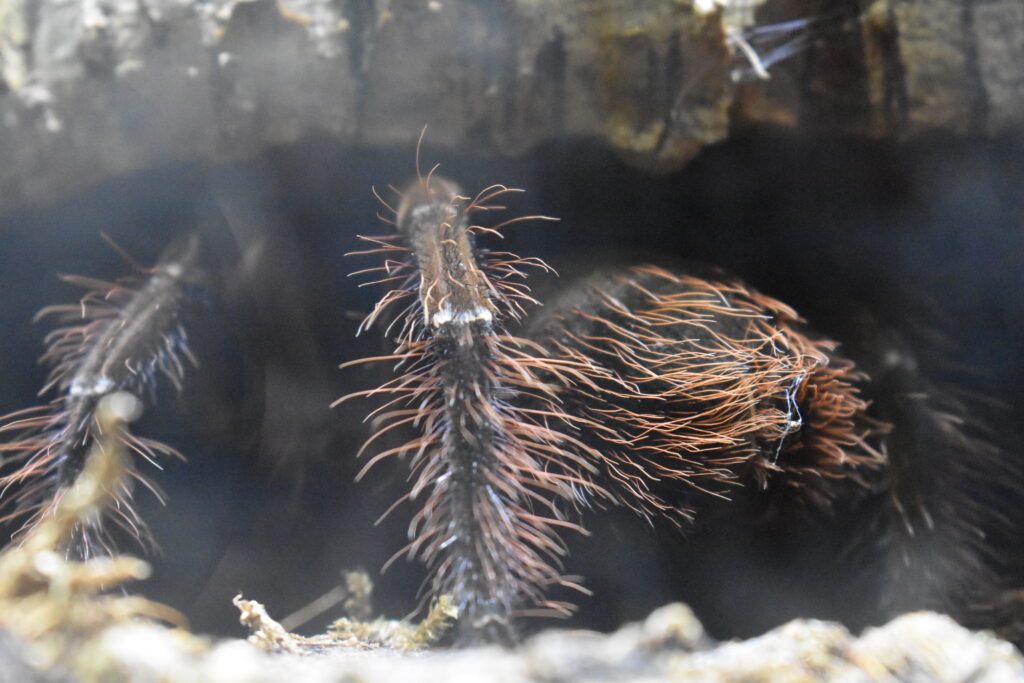On the Web
A predator that weighs up to only six ounces may not sound that intimidating until you realize the creature is considered a king among other animals of its kind. Add on eight legs and many people would immediately get chills. But unless you’re an insect, a mouse or even a small bird, there’s nothing to be scared of about the Goliath birdeater.
The biggest species of spider in the world with a leg span up to 11 inches, the Goliath birdeater is a tarantula that earned its name from the fact that it can eat birds (although this is a rare occurrence) and just about anything smaller than itself, including lizards, frogs, mice and invertebrates.

Goliath birdeaters are endemic to rainforests of northern South America, including Brazil, Venezuela, Guyana, French Guiana and Suriname. They live on the ground in burrows under rocks and roots. Their burrows are lined with the silk they create, which aids in keeping the burrow clean.
Like all spiders, these tarantulas have fangs, which assist in killing prey for food. The spider will also rear up on its hind legs and present its fangs if it feels threatened. If that doesn’t scare away the threat, the spiders can also rub together the tiny hairs on their bodies to make a hissing noise that can be heard up to 15 feet away or even fling some of its hairs, called urticating hairs, onto an attacker. These nearly-microscopic fibers contain barbs and can cause inflammation and irritation.
Goliath birdeaters are typically solitary, only coming together to mate. Odds of successful mating are highest after the female molts, or sheds the exoskeleton for a bigger one, as she will eliminate any acquired sperm during the process.
After successful mating, the female will make a web to place her 50-200 eggs, then wraps them into a ball and, unlike any other species of tarantula, carries the eggs on her back until they hatch. The sacs can be as large as a tennis ball.
The tarantulas will molt several times in their first year, and reach maturity at two to three years old. Females typically live between 10 to 15 years, while males live between three and six years and will die shortly after mating.
This species has not been evaluated by the International Union for Conservation of Nature, but is occasionally considered to be rare because it is less likely to be spotted in the wild.
If our Goliath birdeater facts haven’t given you the heebie-jeebies yet, then you’ll be thrilled to know that there is a Goliath birdeater right here in Norfolk, Virginia! Located in the World of Reptiles and Friends is our male Goliath birdeater. This adult individual arrived at the Zoo in August 2018 and has a leg span measuring between eight and nine inches.

Keepers feed the tarantula twice a week, offering him crickets and dubia roaches. When he isn’t feasting, he can usually be spotted creating a burrow or a cozy web bed. Keepers typically don’t like to bother him more than necessary, as he has a “feisty” personality and won’t hesitate to flick his urticating hairs.
We can’t wait to reopen the World of Reptiles soon so you can see this behemoth of a spider for yourself, but until then, we hope this not-so-scary blog will do.